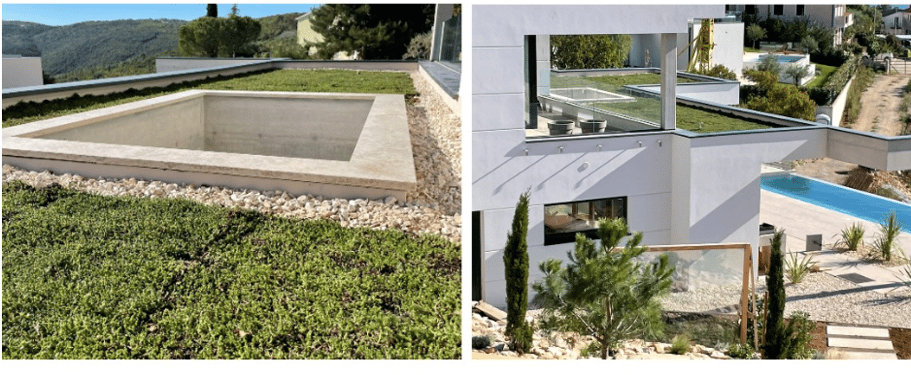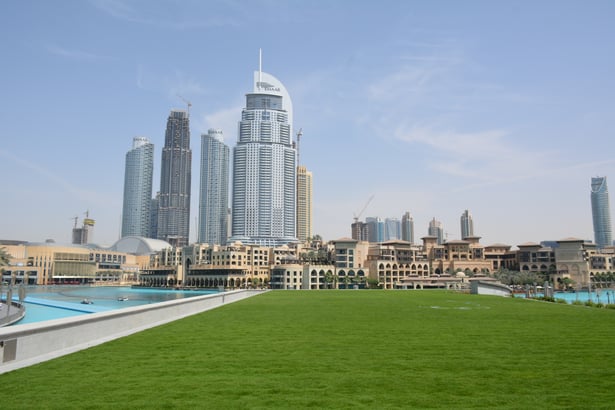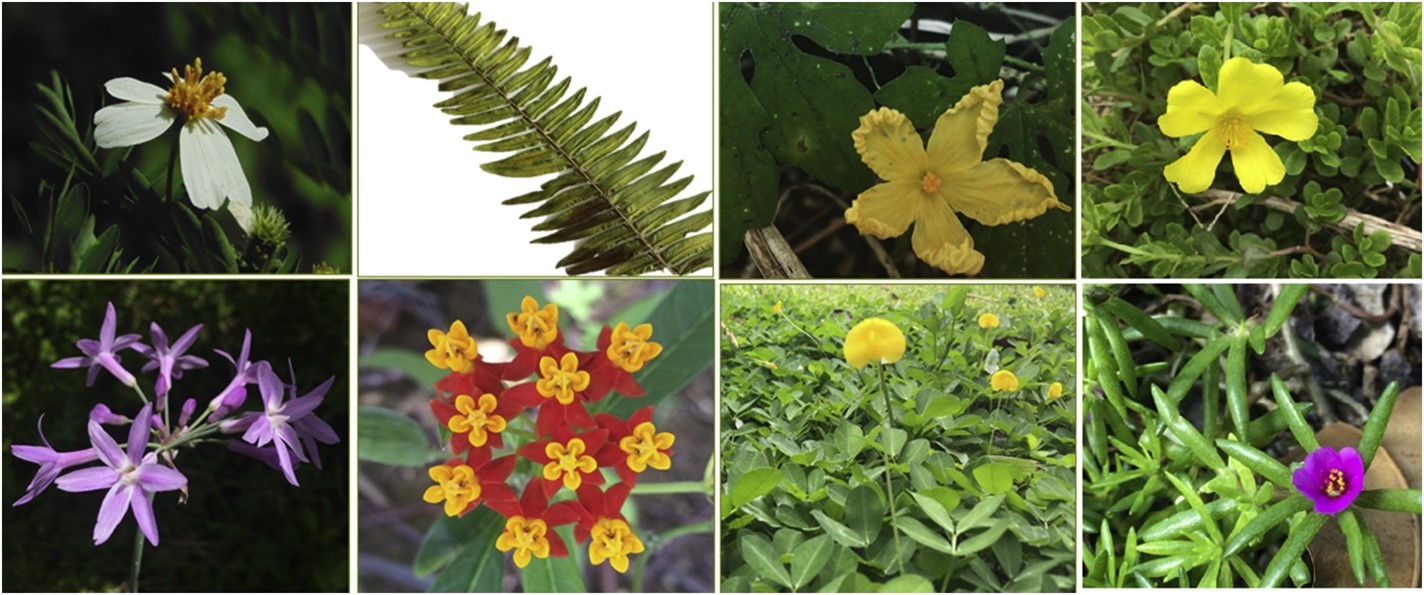Focus: different systems for different climates
Historically, green building solutions similar to green roofs have been found in various places around the world. Most famously, they were used in the ziggurats of ancient Mesopotamia, as described in the accounts of the Hanging Gardens of Babylon. Roman and Greek architecture employed some of these techniques. Taking a wider look at green building solutions, the usage of the plants climbing the building surfaces greatly expanded in the United Kingdom and Central and Northern Europe (especially in Norway) during the 17th and 18th centuries to increase thermal insulation. In the 20th century, interest in green roofs has been restored mostly thanks to the Swiss-born architect Le Corbusier, who included them as one of the five elements of modern architecture, while American organic architects proposed vegetative roofs to better bind buildings to nature (1).
Green roofs behave differently according to the context they are placed in, which is why good design decisions can only be made when taking into account the local environmental factors. Finding an efficient way to construct effective green roofs might be the easiest in Germany, the cradle of modern green roofs, where the intensive implementation of green roofs started in the 1960s and soon spread into Austria, Switzerland and the United Kingdom. In Germany, green roof coverage increases by approximately eight million square meters per year, and the total value of this technology in Germany was estimated to be worth 254 million € in the year 2015. As a result, the most used international design guidelines are the German FLL 2018 which cover the planning, construction and maintenance of green roofs. However, these guidelines are mainly developed for use in the German context. Since there is enough information available for the continental temperate climate type, as seen in Germany, let us go over some other climate types and the recommendations that can be found for green roof installation in different conditions (1).
Hot and Dry Climates
The Mediterranean climate is characterized by long dry periods occurring seasonally, during the summer, with hot temperatures and intense solar radiation. For the design of green roofs in this area, the choice of vegetation is of high importance. The main criteria for choosing plant species should be their tolerance to drought, their indigenous nature, aesthetic characteristics (to ensure acceptance by the general public) and low maintenance requirements. Sedum species are especially appropriate due to their ability to survive for extended periods without water, even up to five weeks of continuous drought. It is a native plant species, suitable for the Mediterranean and other semi-arid climatic regions. Sedum sediforme, for example, can survive with minimal or no irrigation at a depth of only 7,5 cm. Other highly recommended species are Sedum album and Sedum acre, both frequently used on green roofs. However, when dealing with a restricted water supply, a deeper substrate (at least 10 cm) is recommendable to ensure better drought tolerance performance of the plants in extensive green roofs (1).

Urbanscape® Green Roof for the Mediterranean climate
https://www.urbanscape-architecture.com/projects/villa-rabac/
In all-year-round hot and dry climates, this problem is even more pronounced and deserves serious consideration when planning green roofs. A study evaluated the effects of severe drought on growth, water use and survival of five succulent species on green roofs. The researchers found that plants survived 12 days longer in substrates with higher water-holding capacity. Greater water use meant Disphyma crassifolium and Carpobrotus modestus died at least 15 days earlier than Sedum pachyphyllum, Sedum clavatum and Sedum spurium plants which are conservative water users and performed well in hot and dry conditions even more extreme than seen in the Mediterranean. The latter study also highlights that green roofs in hot and dry climates should be planted with species that have low water use and importantly, in substrates with high water holding capacity to help ensure the plants can survive through periods of decreased rainfall (2).

Dubai Opera Garden, Burj Khalifa Complex, UAE, using the Urbanscape® Semi-Intensive Green Roof and Landscaping System, covered by the Urbanscape® Green Roll and Urbanscape® Green Flocks
https://www.urbanscape-architecture.com/projects/dubai-opera-burj-khalifa-complex/
Cold Climates
In the cold coastal climates of Nordic countries temperatures fluctuate greatly over relatively short time periods, there are widely varying amounts of precipitation, and daily freeze-thaw cycles. Additionally, in the Nordic countries, climate change is causing wetter weather. In Norway, average annual rainfall has already increased by 20% in the past 100 years, and paved surfaces mean more stormwater is left on the surface. Green roofs can mitigate that effect through water retention and runoff delay, gradually releasing it to reduce the peak runoff rates. They are both more aesthetically pleasing than traditional stormwater management solutions and more suitable for building retrofits since they do not require extensive ground works and mass transport (3).
Where temperatures, wind speeds and solar radiation can be extreme, plants must be hardy enough to survive short growth seasons, freeze-thaw cycles and long periods of snow cover. A study looking at plants on 41 green roofs in Sweden’s subarctic and continental climate zones found that on average 75-77% of the originally planted species had not adapted well to the local conditions. Various other unintended species had appeared, and increased the biotic richness on the roofs, but contributed much less to the total plant cover than the surviving originally planted species. Sedum and Phedimus species, other than the well-adapted Sedum acre and Sedum album, had mostly disappeared by the time of the study. According to Lönnqvist et al., of the 10 most commonly found species, three were not planted intentionally on the researched green roofs; Epilobium ciliatum, and two flowering plants, Snchus arvensis and Geranium columbinum. This indicates a need for diversification and introducing better-adapted species to improve plant survival and cover in demanding climates, and suggests spontaneous colonization of green roofs should not necessarily be discouraged. Additionally, in areas with sub-zero temperatures, deeper substrates provide insulation for the vegetation, and thus more protection against root freezing injury, and should be considered if possible (4). Similarly, Researchers Liu and Baskaran (2005) found that when comparing two lightweight extensive green roofs in Toronto, Canada, the one with a deeper growing medium of 175 mm performed better than the one with only 75 mm. This is because the lower portion of the deeper growing medium did not freeze for part of the winter and it provided extra insulation to the roofing system. This indicates that in colder climates, a deeper layer of growing medium will provide better results in winter conditions (5).

Karolinska Hospital, Stockholm, Sweden, using Urbanscape® Premium Air and partly Urbanscape ® Premium High systems, covered by the Urbanscape ® Green Roll
https://www.urbanscape-architecture.com/projects/karolinska-hospital/
The Tropical Climate
Hot-humid summers with frequent showers, thunderstorms and occasional typhoons are typical of the tropical climate, meaning the vegetation chosen for these environments should differ from the one in colder or dryer climates. A study in Hong Kong found that the peanut plant, Arachis hypogaea performs significantly better than Sedum in tropical conditions (1). Species like Tulbaghia violacea, Asclepias curassavica and Arachis hypogaea seemed to be well adapted according to a study done by Grullón – Penkova and fellow researchers. Native species spread all over the green roofs almost regardless of the substrate depth. Species that were found to be doing outstandingly well in the study done on various tropical green roofs were Bidens alba, Nephrolepis multiflora, and Momordica charantia, indicating they might be a solid choice for green roofs in similar environments (6). In terms of construction, the Hong Cong study has shown that the rockwool layer had the benefit of both being lightweight and exhibiting exceptionally high-water storage capacity, regulating and releasing the water supply to plants (1).

Some of the most common sampled species on tropical green roofs. From left to right, (on top): Bidens alba, Nephrolepis multiflora, Momordica charantia, Portulaca oleracea, (on the bottom): Tulbaghia violacea, Asclepias curassavica, Arachis hypogaea, Portulaca pilosa. Image source: Grullón – Penkova et al. (7).
In conclusion, planning and constructing a green roof requires expertise and deep knowledge of local climactic conditions and appropriate plants, which is why consulting an expert is of great importance in order to produce a roof that is efficient and well-suited to long-term plant survival.
In order to obtain more information about the implementation of Urbanscape® products in various different climates, you are welcome to visit our projects page: https://www.urbanscape-architecture.com/projects/.
Blog written by: Ana Belčič, Studio Miao
-
Stefano Cascone (2019). Green Roof Design: State of the Art on Technology and Materials, Sustainability 11, 3020; doi:10.3390/su11113020
-
Farrell, R.E. Mitchell, C. Szota, J.P. Rayner, N.S.G. Williams (2012). Green roofs for hot and dry climates: Interacting effects of plant water use, succulence and substrate, Ecological Engineering, Volume 49, Pages 270-276, DOI: 10.1016/j.ecoleng.2012.08.036
-
Erlend Andenæsm Tore Kvande, Tone M. Muthanna and Jardar Lohne (2018) Performance of Blue-Green Roofs in Cold Climates: A Scoping Review, Department of Civil and Environmental Engineering, Norwegian University of Science and Technology (NTNU), NO-7491 Trondheim, Norway
-
Joel Lönnqvist, Godecke-Tobias Blecken, Maria Viklander (2021). Vegetation cover and plant diversity on cold climate green roofs, Journal of Urban Ecology, Volume 7, Issue 1, juaa035, https://doi.org/10.1093/jue/juaa035
-
Karen Liu, Bas Baskaran (2005) Thermal Performance Of Extensive Green Roofs In Cold Climates, World Sustainable Building Conference [Proceedings], Pp. 1-8, 2005-09-01
-
Iana F. Grullón – Penkova, Jess K. Zimmerman, Grizelle González (2020) Green roofs in the tropics: design considerations and vegetation dynamics, Heliyon, Volume 6, Issue 8, e04712, ISSN 2405-8440, https://doi.org/10.1016/j.heliyon.2020.e04712.


